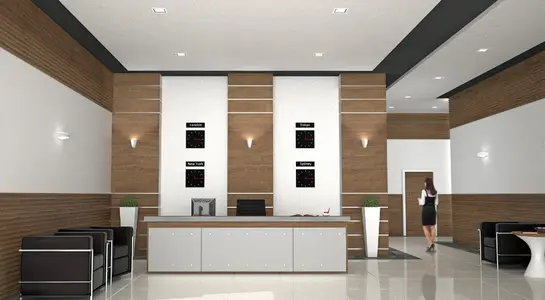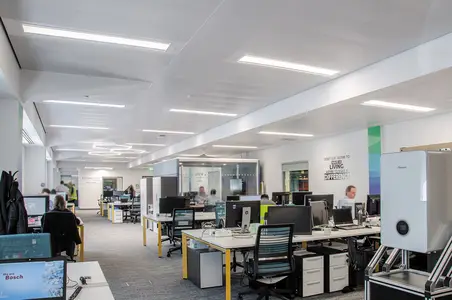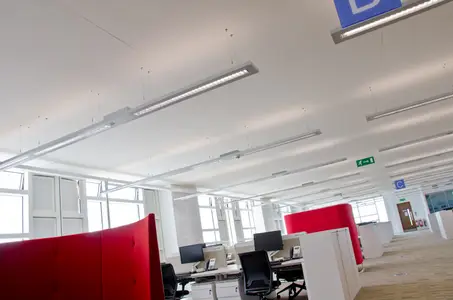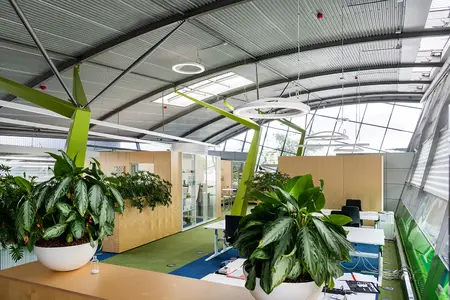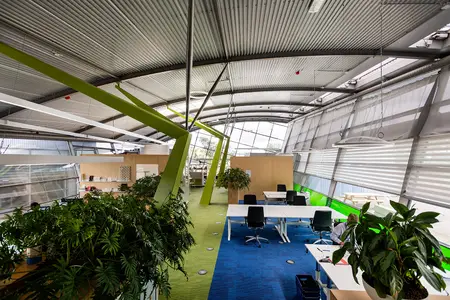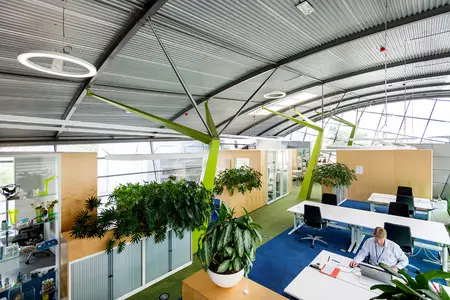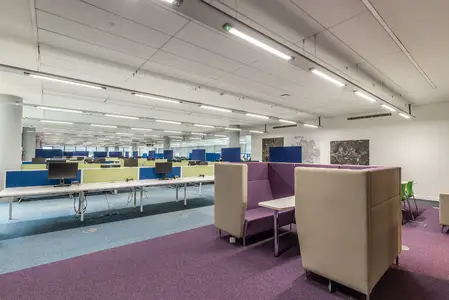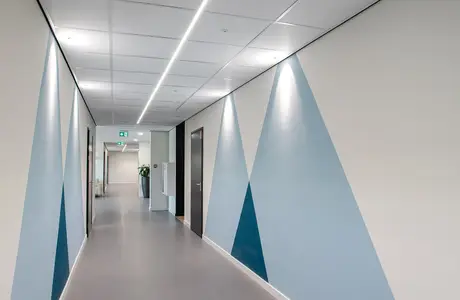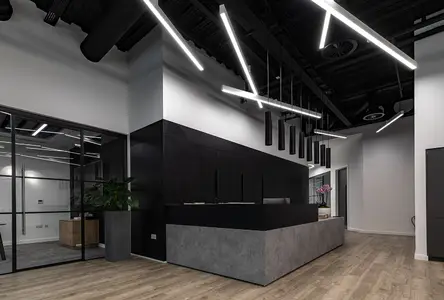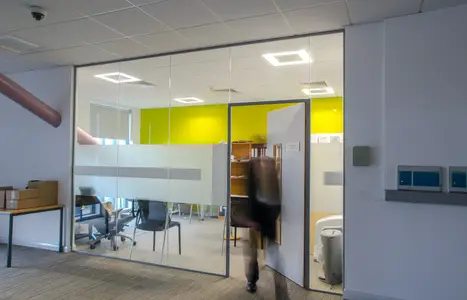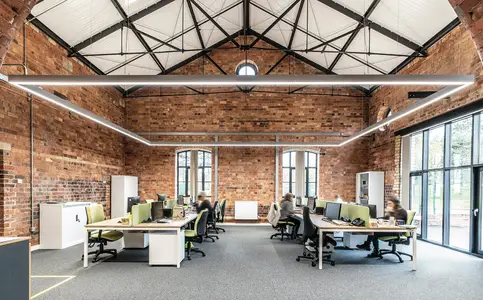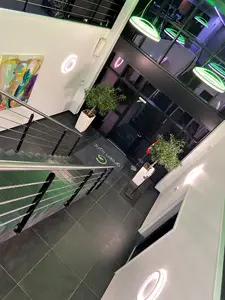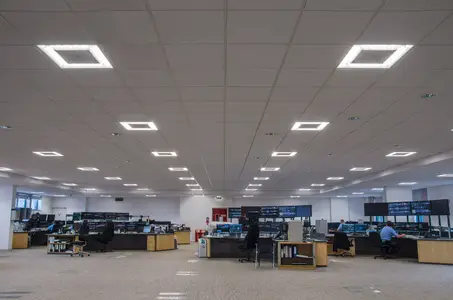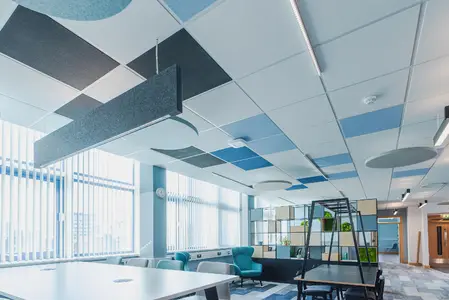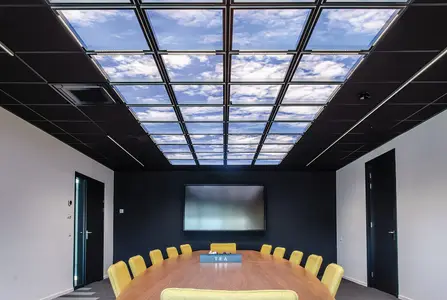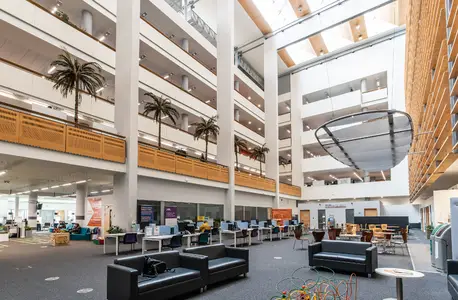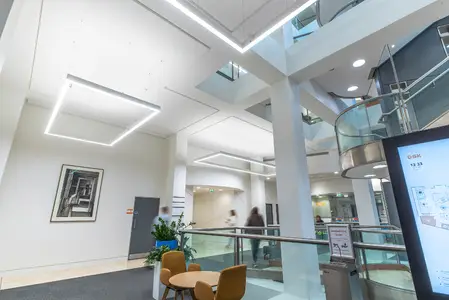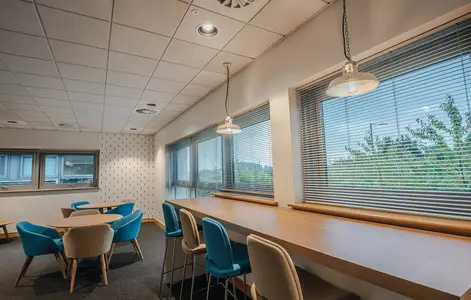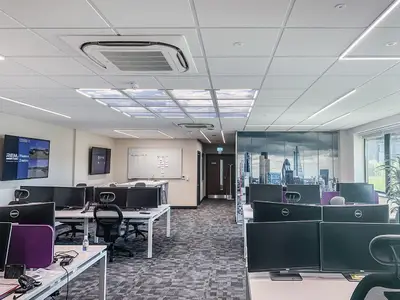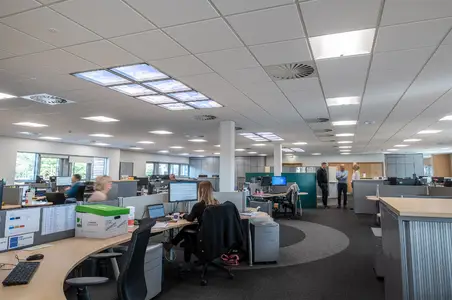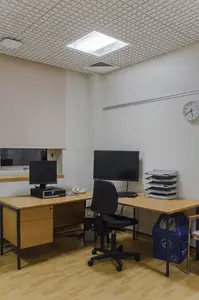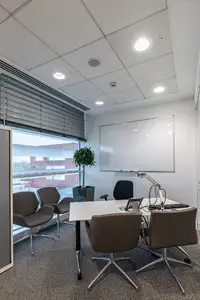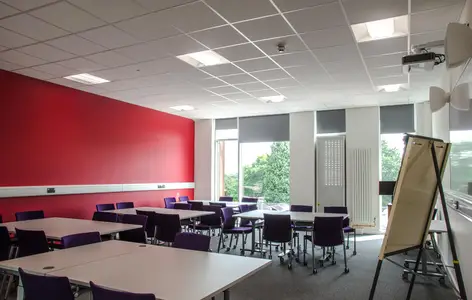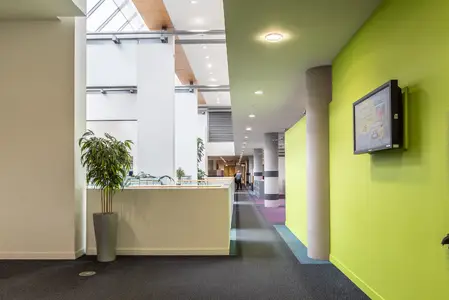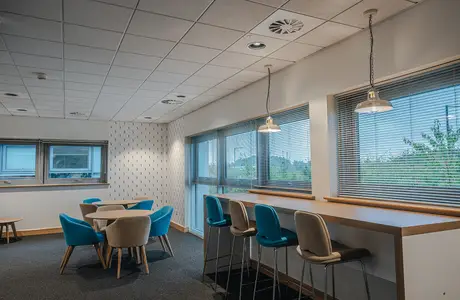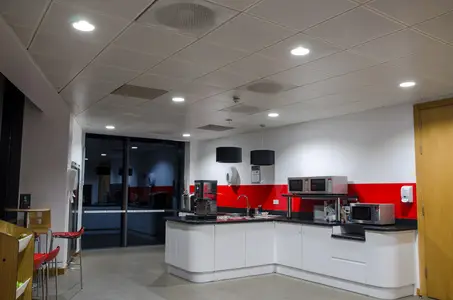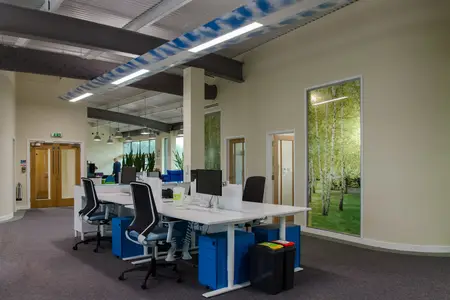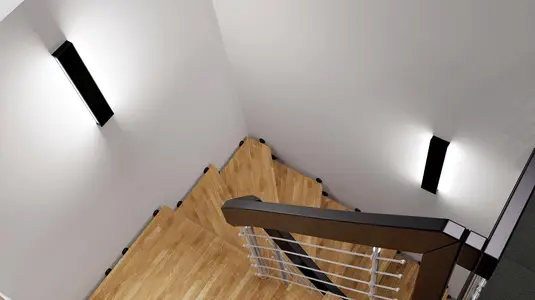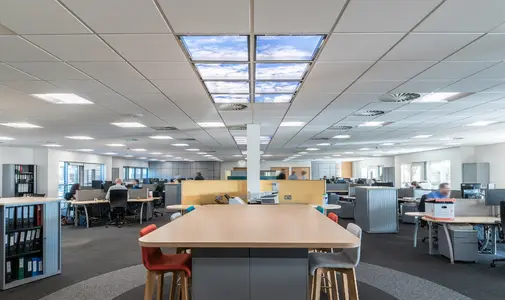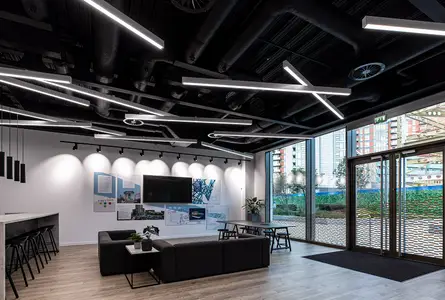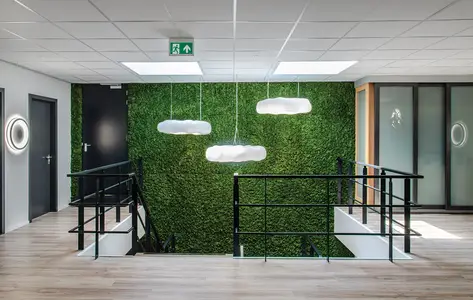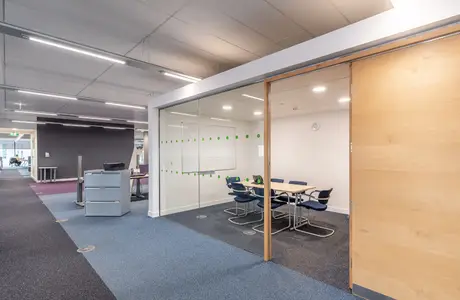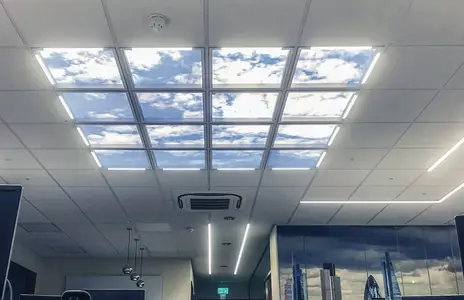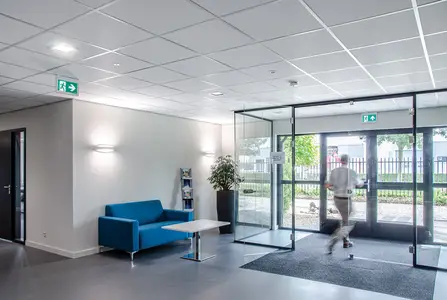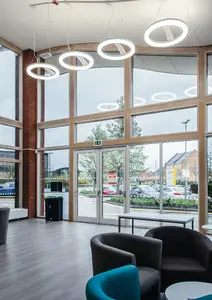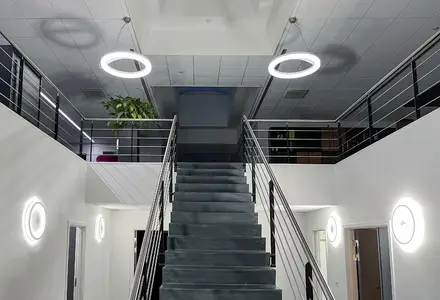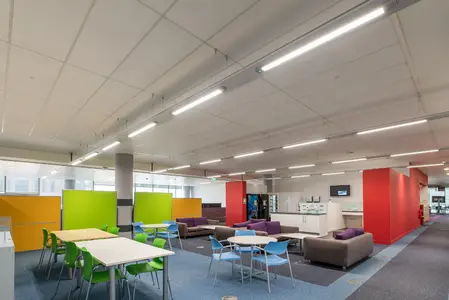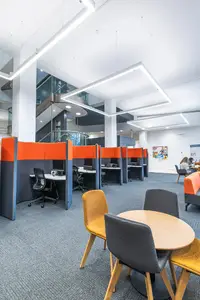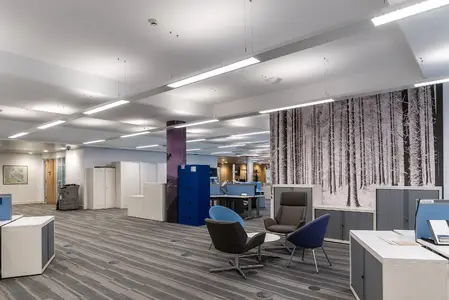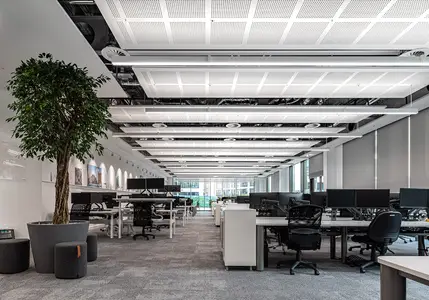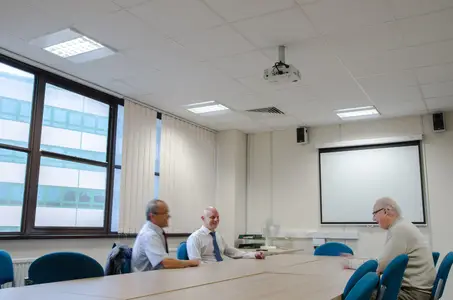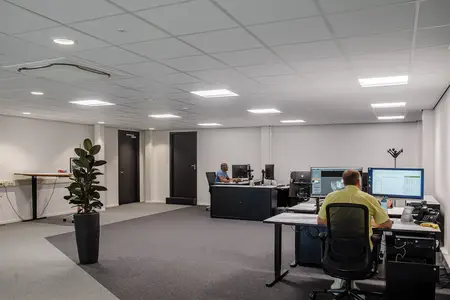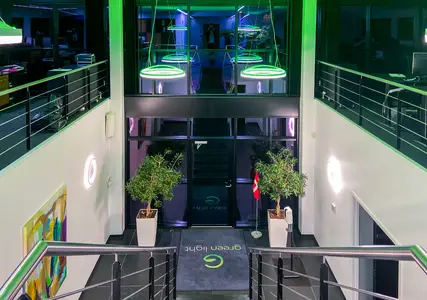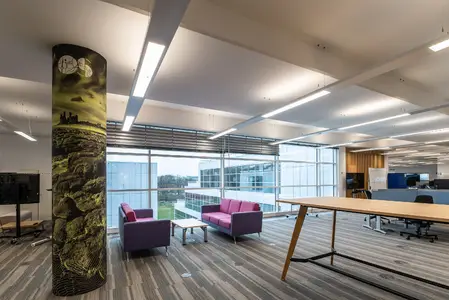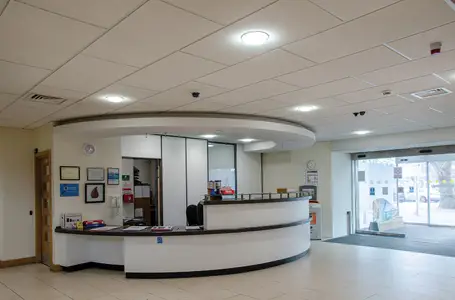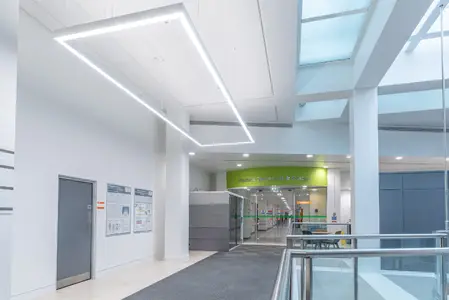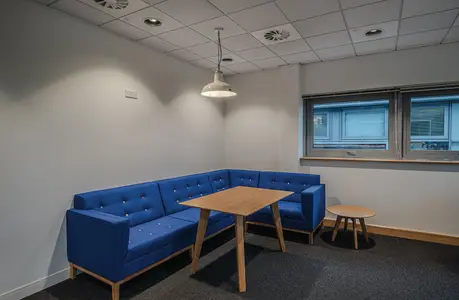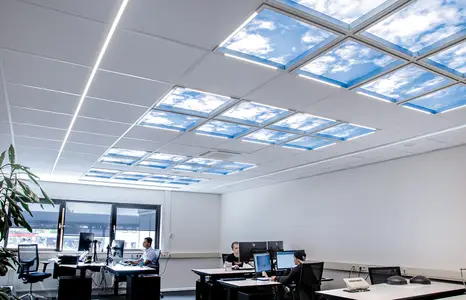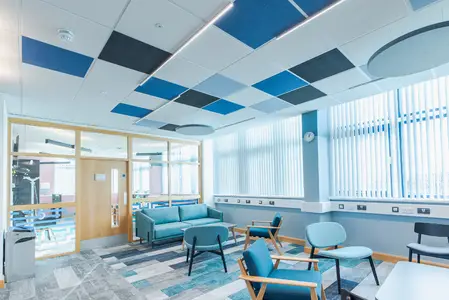Office
The choice of luminaires for offices is governed by a number of factors:
- Aesthetics. The luminaire style (recessed, surface or suspended) is often dictated by architectural requirements, particularly ceiling type.
- The work environment. Lighting can have a significant impact on worker efficiency, health, well-being and comfort. These can impact the speed and accuracy of work, so need to be considered carefully.
- Task requirements. Some offices are used solely for paper-based work, others solely for screen work, but the majority of office tasks require a combination of both. Therefore luminaires with optimal distribution patterns and output levels to match the tasks being undertaken should be selected.
Areas
The Office Environment is Changing
Greater emphasis is being placed on creating visually stimulating and interesting places to work, which means that office designs are becoming more flexible and less uniform. Hot-desking and break-out spaces are being incorporated, and this necessitates changing the way offices are lit.
Glare Control
It is important that luminaires comply with the luminance limits set out in the CIBSE: SLL Lighting Guide 7 - Offices 2015 to ensure user comfort and avoid distracting reflections in computer screens.
The limits vary from 1,000 cd/m² to 3,000 cd/m² depending on the type of screen and software being used. It’s important to ensure the luminaire complies with these limits.
Unified Glare Rating (UGR) must also be calculated for the space, typically UGR should not exceed an index of 19 for office work spaces. Thorlux pays particular attention to these parameters and manufactures a wide variety of luminaires that either meet or exceed these requirements.
Energy Efficiency
Minimising energy costs is achieved by selecting high efficacy luminaires in combination with a lighting management system that factors in light levels and occupancy detection. SmartScan uses a ‘Maintained Illuminance’ approach to ensure the correct illumination level is maintained throughout the life of the installation and ‘Daylight Dimming’ to respond to changing daylight levels. Presence detectors ensure that luminaires are turned off when spaces are vacated. These techniques, when combined, can produce savings in excess of 50% compared to manual switching.
 Find out more
Find out more
Emergency Lighting
Emergency Lighting is a fundamental safety requirement for offices. The minimum requirements are 1 lux down the centreline of corridors used as escape routes, and 0.5 lux in open spaces >60 m². Exit signs are required.
For more information, see the Emergency Lighting section of the website.
Find out moreSmartScan Emergency
The small emergency downlight (Firefly) is unobtrusive and discreet, whilst the performance of the corridor and area lenses means the number of emergency luminaires can be reduced when compared to conventional maintained luminaires or emergency bulkhead luminaires.
The automatic testing regime eliminates the need for time-consuming and costly manual testing.
Find out moreInstallation
Installation can be simplified and sped up by using pre-wired systems, such as the Lighting Cable Management system supplied as standard with SmartScan and Smart recessed luminaires. The SmartScan wireless lighting management system eliminates the need for signal cables, simplifying the installation even further.
Find out more